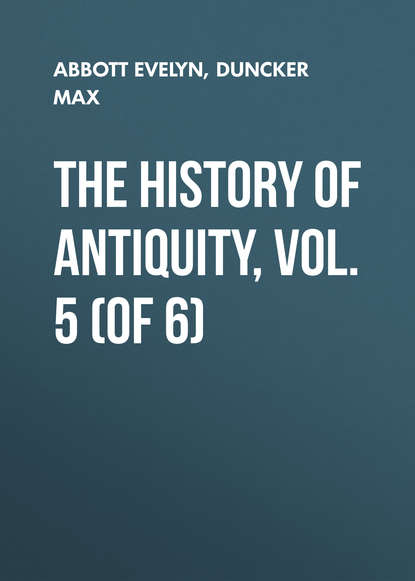По всем вопросам обращайтесь на: info@litportal.ru
(©) 2003-2024.
✖
The History of Antiquity, Vol. 5 (of 6)
Настройки чтения
Размер шрифта
Высота строк
Поля
180
Pouruta may be referred to the Παρυηται of Ptolemy, whom he places in the north of Arachosia.
181
Cf. "Mihr Yasht," 127, where the boar is not Verethraghna but the "curse of the sage."
182
Windischmann, "Mithra; Abhl. für Kunde des Morgenlandes," 1, 1 ff.
183
Haug, "Essays," p. 185. The Sassanids also carry the club now called guzr.
184
"Yasht Bahram," 57-62. Burnouf, "Commentaire sur le Yaçna," p. 285.
185
"Ram Yasht," 43-57.
186
"Aban Yasht," 64 ff.; "Yaçna," 74.
187
Hang, "Essays," p. 179. The passages given in the text from the Aban Yasht, notwithstanding the swelling breasts, shows how definitely the form of Anahita belongs to the Iranian conception, how peculiarly this goddess of fountains is represented in this form, and how intimately connected she is with the whole Iranian system of the boon of water, and the legends of the heroes. A brass tablet found at Grächwyl in the canton of Berne, which exhibits the Persian Artemis with swelling breasts, surrounded by four lions, with a bird of prey on her head and serpents instead of ears, and wings on the shoulders, has decided J. Stickel ("De monumento Graechwyliano") to regard the Persian Artemis as identical with the Semitic goddess of birth. This tablet is due to the syncretism of Roman times. Certain similarities between the Syrian goddess of birth and fertility, Mylitta-Derceto, and the Persian goddess of water, might lead to such a syncretism even under the Achæmenids, and this coincidence might determine Artaxerxes Mnemon to erect images of Anahita in Ecbatana and Susa after the pattern of the Semites. Beros. fragm., 16 ed. Müller, and below.
188
"Tistar Yasht," 24 ff., 40, 49-58.
189
"Yaçna," 56; "Vend." 18, 39.
190
"Vend." 8, 248-250; "Yaçna," 26, 61, 23; "Yasht Farvardin," 77.
191
"Vend." 18, 57-63, 19, 134.
192
Roth, "Ueber Yaçna, 31," Tübingen, 1876, s. 6, 20.
193
"Vend." 19, 135; "Yaçna," 17, 69.
194
"Yaçna," 31, 3, 19.
195
"Yaçna," 9, 10, according to Burnouf, "Journ. Asiat." 1844-1846. Cf. Spiegel "Avesta," 2, 68 ff.
196
"Gosh Yasht," 17; "Mihr Yasht," 88; "Yaçna," 56, 8.
197
"Yaçna," 29; Roth; "Z. D. M. G." 25, 6 ff. Geus urva means soul of the bull; the priests identified the soul of the first created bull with the protectress of the flocks, the Drvaçpa, i. e. having mighty horses. Spiegel, "Avesta," 3, 74.
198
"Aban Yasht," 17-19.
199
"Afrin Zartusht," 4.
200
"Yaçna," 9, 42.
201
"Farvardin Yasht," 93, 94.
202
"Ashi Yasht," 17 ff.
203
"Bahram Yasht," 28-33.
204
"Yaçna," 13, 18; 64, 38; 69, 65.










